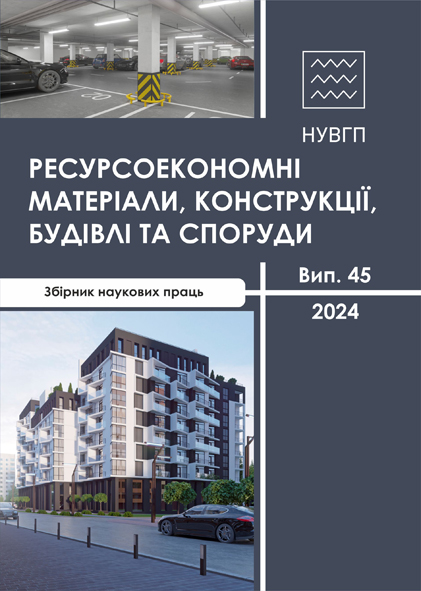RHEOLOGICAL AND CHEMICAL AND COLLOIDAL PROPERTIES OF MAGNESITE-CONTAINING ALUMINOSILICATE ADHESIVES
DOI:
https://doi.org/10.31713/budres.v0i45.07Abstract
Because of the study, the effectiveness of magnesite powder as a regulator of the rheological and chemical-colloidal properties of aluminosilicate adhesives was established. It was noted that the introduction of magnesite in the amount of 0.5 to 1.5% in the speed range from 0.1 to 0.5 RPM into the aluminosilicate base contributes to a decrease in the dynamic viscosity values from 150000, 1668800, 211200 cP to 58080, 72720 and 69120 cP, respectively, and the appearance of adhesive fluidity. Further increase of the viscosity rotation speed from 1.5 to 70 RPM contributes to the dilution of the adhesives' solidity, the values of the dynamic viscosity decrease, respectively, 1536, 1546 and 1714 cP, but are 1.54 times higher than the viscosity of the original adhesive. At the content of 1% magnesite in the adhesive, in the specified speed range, stabilisation of the viscosity values (1752 cP) we observed. The described dependencies indicate the pseudo plastic state of the adhesives, and the change in viscosity is exponential. A similar pattern we observed when studying the effect of magnesite additives on the shear forces of adhesives. In the range of shear rates of 0.063 - 0.105 1/s, which is identical to the spindle rotation speed (0.1 - 0.5 RPM), there is a sharp drop in the shear force values to 76.36 dyn/cm2. A further increase in shear rates from 1.05 to 4.2 1/s leads to a stable average value of the sheer force of 174.54 dyn/cm2. The addition of magnesite helps to reduce the surface tension by 1.03 times; increases the wetting angle by 1.29 times, the spreading coefficient (-38.32 mN/m) is closest to the values of the original adhesive (-27.47 mN/m) compared to adhesives containing 0.5 and 1.5% magnesite. The work of adhesion, cohesion, wetting forces and wetting coefficient values are within the limits of permissible values for this type of material. The obtained regularities of changes in the rheological and chemical-colloidal properties of adhesives modified with magnesite in an amount of 1% will contribute to solving technological issues related to practical testing when applying the adhesive to a toothed joint in the production of built-up bars.

